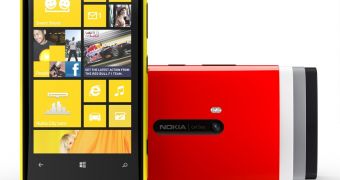Finnish mobile phone maker Nokia made its first Windows Phone 8 smartphone official with a large 4.5-inch PureMotion HD+ touchscreen display, claiming that it is the fastest in the world.
The company is betting big on the features and capabilities of its new device, and says that the screen is one of its main selling points.
Not only does the screen offer a great viewing experience to all users, but it is also ultrasensitive, enabling them to operate the device even with gloves on.
“PureMotion HD+ is the fastest screen on a smartphone. In fact, it is over twice as fast as the displays on competitor smartphones currently on the market,” a recent post on Nokia Conversations reads.
The PureMotion HD+ display can deliver crisp images and less blurring while navigating the web or playing games, all this being the result of an evolutionary process, Nokia suggests.
Jussi Ropo, Nokia’s senior technology manager, explains that there are things that actually affect the blurriness of the display.
“First of all, all rendering should happen at a stable 60fps as only then you get rid of the jaggedness in the moving content. You can say it’s a prerequisite for all the further improvements,” he says.
Additionally, Nokia explains that the user experience is tightly related to the speed at which the liquid crystal can change its state (or its color).
“First, when you measure 60fps it means 16.7ms – you have a new image coming every 16.7ms on the display. It is intuitive to think that when your LCD response or transition time is longer than this one frame period then you will actually get quite a lot of blur,” Jussi explains.
With Lumia 920, Nokia tried to speed the response time to less than 16.7ms, and says that it managed to bring it down to under 9ms.
“On average it takes about 9ms for all of the transitions so regardless of e.g. what shade of blue you are turning into what shade of yellow, it is always below 9ms. This is the biggest step forward in the screen speed of the Lumia 920,” Jussi continues.
This speed was achieved through boosting the voltage to each LCD pixel, which enables the company to show all the frames as intended, without creating blur because the LCD was not able to respond at the needed speed.
However, it seems that the Finnish mobile phone maker is still looking for means to improve the screens even more, although it has managed to pack Lumia 920 with a leading display.

 14 DAY TRIAL //
14 DAY TRIAL //